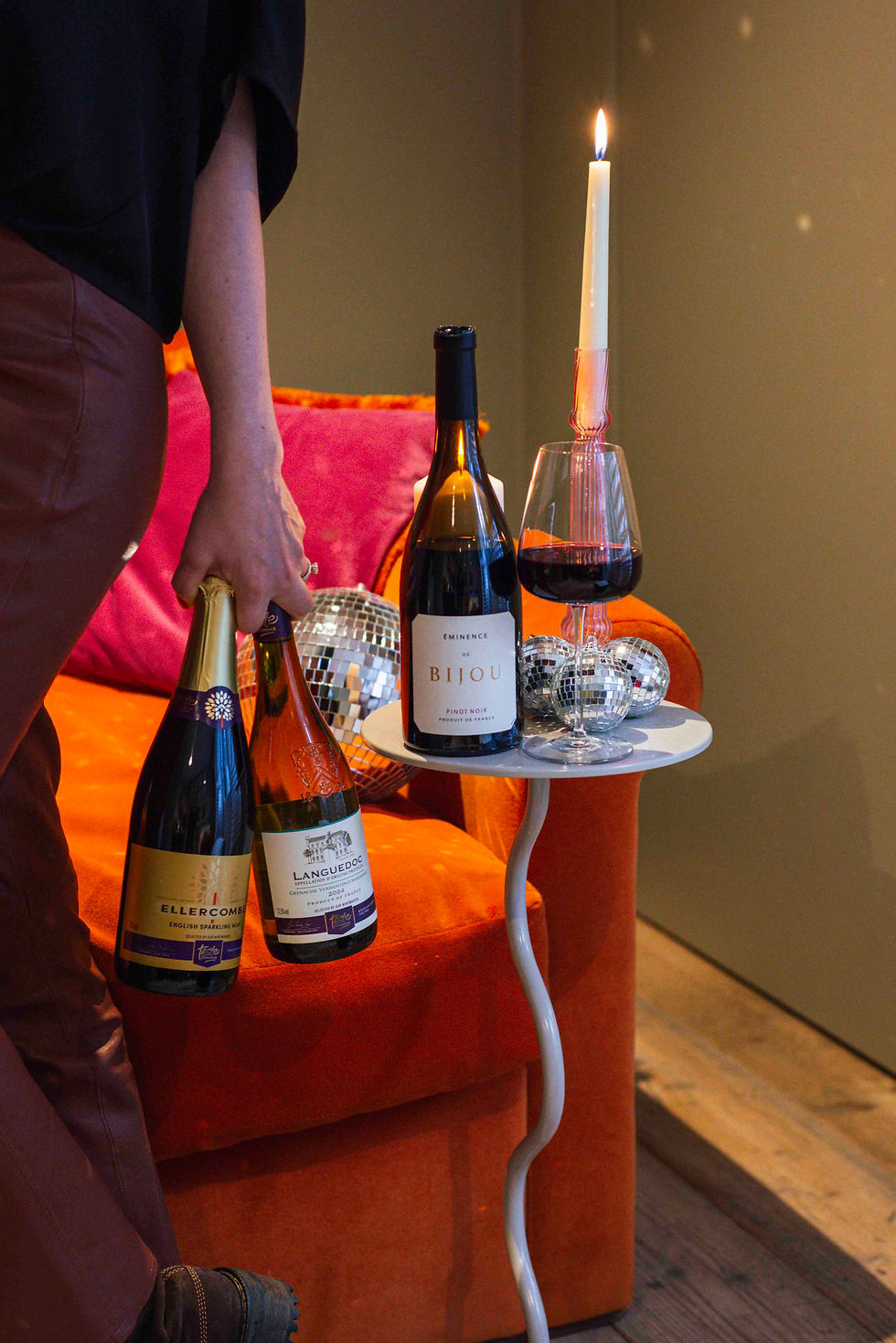Women in Wine: Cool climate elegance from South Africa
- Elizabeth Hawthornthwaite
- Oct 31
- 4 min read
South Africa is still a best kept secret in wine. Some of the most exciting bottles on the shelves come from the Cape and they offer serious value. Two things make the region special for producers - diverse soils and the unique climate which shaped by two oceans, the cool Atlantic and the warm Indian which brings dry heat, fresh air, and intense sunlight.
Samantha O’Keefe is a South African winemaker whose story is just remarkable.
Sam was raised in San Francisco, where her love for wine began at the family dinner table. After studying viticulture and oenology at UC Davis and working harvests in Napa and beyond, she discovered a piece of land outside the quiet village of Greyton in South Africa’s Western Cape. This wasn’t wine country, but in 2003, Sam saw what others didn’t: possibility.
Tucked into the foothills of the Riversonderend mountains, on a plateau 300 metres above sea level, Sam founded Lismore Estate. It’s dramatic, rugged, and remote, snow-dusted in winter, sun-drenched in summer – a paradise for grapes.
The early years were tough. She was a single mum raising two boys and building a wine estate from scratch, in a region with no other vineyards for 50 kilometres. South Africa’s new wine movement hadn’t yet begun. Selling wines from an unheard-of place, made by a woman wasn’t easy.
But it wasn’t long before Sam’s wines started turning heads. Her wines had become known for their elegance, precision, and restraint. But then came the fire.
Just before Christmas on 17 December 2019, a wildfire tore through the mountain and destroyed everything. Sam’s home, her cellar, and a large part of the vineyard were lost. Her entire 2019 vintage was wiped out. She lost nearly all her possessions including one of her beloved Great Danes.
It was devastating. But she wasn’t beaten.
Within five years, Sam rebuilt. Her new cellar is now complete. Her house has been rebuilt. She was elected Chair of the Cape Winemakers Guild, one of the most prestigious roles in South African wine, all while pushing her wines to new heights.
Today, she works with fruit from her own estate and selected sites along the cool, coastal stretches of the Cape, including Elgin and the Helderberg. Her style is elegant, minimalist, and expressive, fermentation in old barrels or concrete eggs.
This is not your average Sauvignon. If you like Chardonnay, you will like this – it combines the signature nose of Sauvignon with pink grapefruit, fennel and ginger spice. It’s textured, saline, and wonderfully fresh. Perfect with grilled prawns or goats’ cheese salad.
Syrah is Sam’s signature grape. In her hands, it’s refined and expressive full of dark fruit, pepper, and crushed violets. One for dinner parties, slow-cooked lamb, gourmet burgers and roasted vegetables.
Giulia Negri. Barolo’s modern face — bold, intuitive, and unafraid of change
There’s a new generation of women who are making wine in Barolo, Piedmont - and Giulia Negri is leading the charge.
Giulia made a bold decision in 2013 to bet on the Langhe’s most prized slopes — planting Pinot Noir, Chardonnay, and Nebbiolo on the highest ridge in Barolo, surrounded by the last remaining forest in the area.
Giulia brings a fresh mindset. She doesn’t come from a winemaking background, so if something works, she does it. Whether that means using large format barrels or smaller barriques, she’s not afraid to innovate if it improves the wine. As she says, “it’s not about fighting change, it’s about embracing it”. In tradition-bound Barolo, that’s very unusual.
For Giulia, it was a trip to Burgundy that changed everything. She tasted something that connected with her emotionally, intellectually, spiritually. It was there she realised wine could be a calling.
Barolo, she reminds us, is a wine of terroir. Each one of her Barolos comes from three different soils — clay, limestone, and sand — and each show a distinct personality, from ripe and fruit-driven to savoury and mineral. As the longest ripening grape in the vegetative cycle, Nebbiolo is thriving in the face of climate change. Twenty years ago, great vintages were rare. Now, almost every vintage is excellent.
Her 6.5-hectare vineyards sit alongside a 12.5-hectare forest, the last in the area. It’s a haven for biodiversity, with no monoculture, natural cross-pollination and beehives for honey. She recently spotted a wolf nearby which unnerved her two dogs but was reminder of just how alive her land is.
Her vineyards benefit from high altitude, with constant breezes and in the forests are tones of truffles. Giulia farms organically, and she’s planning to build her own cellar in the coming years.
Gorgeous red colour, with bright cherry, blueberries and strawberry. It has great structure, being at once earthy and savoury with great pose and acidity to keep it light.
Also recommend Langhe Nebbiolo Pian delle Mole Giulia Negri 2022 £24.72
This is such a find - it’s the same grape as Barolo, minus the price tag as it sits just outside the borders of Barolo DOCG. Here you get great value and a wine more approachable to drink. Its vibrant, red cherry, raspberry, floral and mineral. The tannins are soft and silky and with a long sweet spice finish.
As well as being famous for wine, Piedmont is known for truffles – and autumn is prime white truffle season. My tip - if you’re going to do truffles, do them properly. Buy one good truffle and go all in. Shave it generously over a bowl of buttered tajarin pasta or even just two fried eggs, like the Piemontese do.
If you ever get the chance, visit Guilia, especially in truffle season. You can hunt for truffles, walk through the chestnut woods, and taste some of the most exciting wines in Barolo today.
Elizabeth x
Platinum Magazine Columnist








Comments